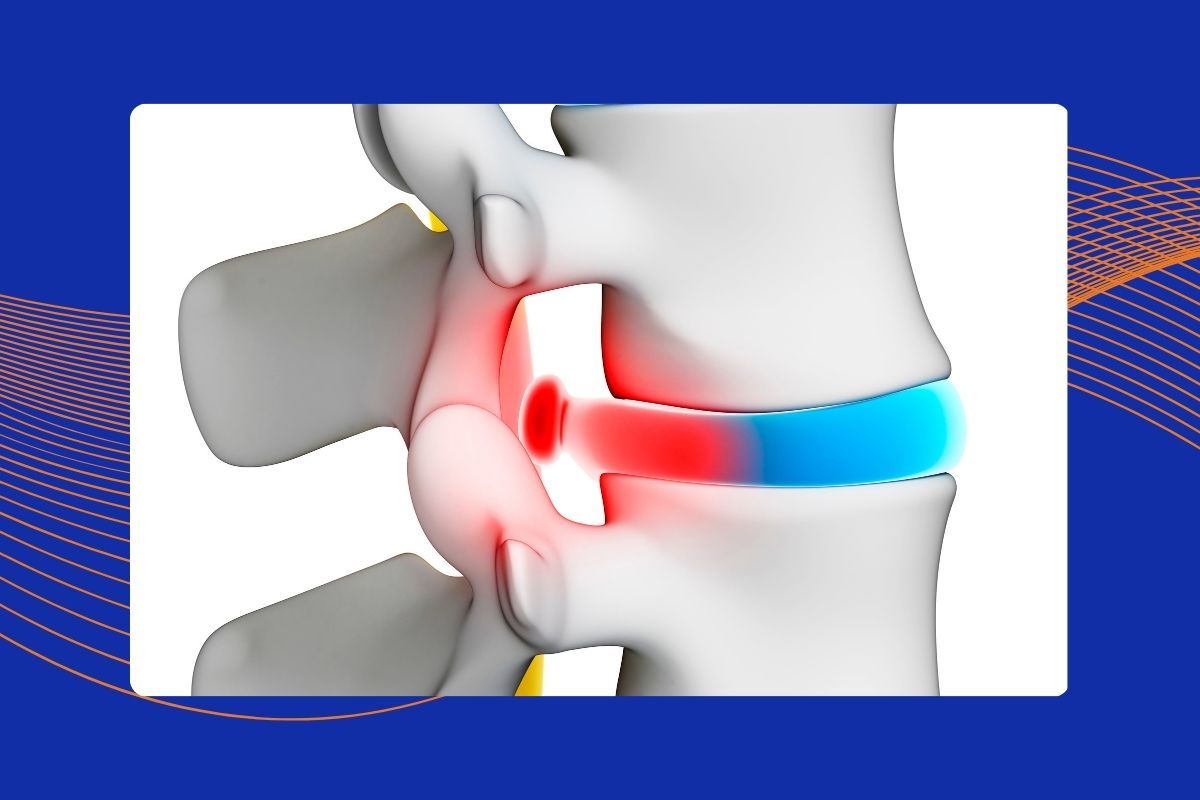Navigating the world of spinal health can be complex, especially when it comes to understanding conditions like bulging discs and herniated discs. These terms are often used interchangeably, leading to confusion among patients seeking clarity about their spinal issues.
In this article, we’ll delve into the key differences between bulging discs and herniated discs, shedding light on their distinct characteristics, symptoms, causes, and treatment options. By gaining a deeper understanding of these spinal conditions, individuals can make informed decisions about their health and well-being, empowering themselves to seek the appropriate care and treatment for their specific needs.
Join us as we unravel the mystery behind bulging discs and herniated discs, providing clarity and insight into these common spinal abnormalities.
The Bulging Disc
Bulging discs, also known as protruding or slipped discs, occur when the outer layer of a spinal disc weakens and bulges outward. Unlike herniated discs, the inner material does not protrude through a tear in the outer layer.
Identifying Symptoms
Symptoms of a bulging disc may include localized or radiating pain, numbness, tingling, and weakness in the affected area. The symptoms can vary depending on the location of the bulging disc and the nerves it affects.
Causes and Risk Factors
Several factors can contribute to the development of bulging discs, including age-related degeneration, repetitive strain injuries, poor posture, and genetic predisposition. Identifying these risk factors is essential for prevention and management.
Diagnosis and Evaluation
Diagnosing a bulging disc typically involves a physical examination, a review of medical history, and imaging tests such as MRI or CT scans. These tests help determine the location and severity of the bulging disc and guide treatment decisions.
Treatment Options
Treatment options for bulging discs aim to alleviate pain, reduce inflammation, and improve mobility. Conservative treatments may include rest, pain medication, physical therapy, and epidural steroid injections. In some cases, surgery may be recommended to address severe symptoms or complications.
The Herniated Disc
Herniated discs, also known as slipped or ruptured discs, can significantly impact your spinal health and overall well-being. When a disc becomes herniated, the inner material protrudes through a tear or weak spot in the outer layer, causing pressure on nearby nerves.
Identifying Symptoms
Symptoms of a herniated disc may include localized or radiating pain, numbness, tingling, and weakness in the affected area. The specific symptoms can vary depending on the location of the herniation and the nerves affected.
Causes and Risk Factors
Several factors can increase the risk of developing a herniated disc, including age-related wear and tear, repetitive strain injuries, sudden traumatic injury, obesity, and smoking. Understanding these risk factors can help in prevention and management.
Diagnosis and Evaluation
Diagnosing a herniated disc typically involves a physical examination, a review of medical history, and imaging tests such as MRI or CT scans. These tests help determine the location and severity of the herniation.
Treatment Options
Treatment options for herniated discs range from conservative measures to surgical intervention. Conservative treatments may include rest, pain medication, physical therapy, and steroid injections to reduce inflammation. In severe cases where symptoms persist or worsen, surgery may be recommended to alleviate pressure on the affected nerves.
Pain & Diagnosis
Herniated Discs are more likely to result in pain, as the nerves are involved. Irritation resulting in the abnormal condition of the disc may be caused by inflammation of the nerve root. If the disc bulges further outside the protective cartilage, pain is likely.
It’s often the case that herniation is revealed by diagnostics when there’s been no pain experienced by the patient. That’s why diagnostics of various types are so important to getting to the root cause of back pain. People experiencing back pain will often suspect disc anomalies, but that’s not always the case.
Key Takeaways
Understanding the difference between a bulging disc and a herniated disc is essential for accurate diagnosis and effective treatment. While both conditions involve abnormalities in the spinal discs, they have distinct characteristics and treatment approaches.
By recognizing the symptoms, causes, and risk factors associated with each condition, individuals can work with healthcare professionals to develop personalized treatment plans that address their specific needs. Whether conservative measures or surgical intervention is necessary, early intervention and proactive management can lead to improved outcomes and a better quality of life.
If you’re experiencing symptoms of a bulging or herniated disc, don’t hesitate to seek medical attention to explore treatment options and find relief from discomfort.
